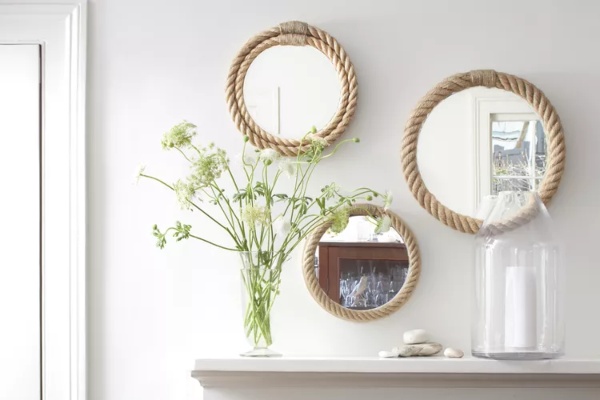It is challenging to decorate an interior room with little to no natural light. Normally colors feel more saturated and decor looks bulky in shadows which spaces feel uninviting. We interacted with some interior designers who shared simple design tricks that can quickly brighten a dark room.
-
Choose Light Paint Colors
There are many ways to brighten a dark room. Dark paint colors will always make a room look heavy and drab. So, we recommend you opt for a lighter back color. “Select a wall color that will reflect light around the space, not absorb it,” says Rebecca Zoet, designer and owner of This New Old House. Some examples of light paint hues to choose for a dark room are shades of beige, white, pale gray, and tan.
2. Add Wallpaper
Along with adding light wall paint, enjoy the uninterrupted wall space by adding more creativity to your room with wallpaper. “You could add texture with grasscloth or go bold with a patterned design,” says Zoet. This is even more of a great idea to use in a bathroom where natural light is very low and it is easy to have some fun with bolder decor choices.
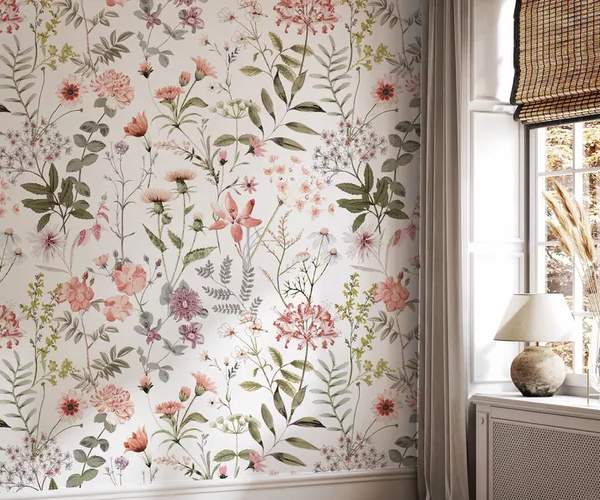
3. Add Accent Lighting
It’s always great to have warm accent lighting if you want to brighten a dark room. “Lamps can serve as great task lighting for reading or desk work but can also add a sense of coziness as the ambient light source in the room,” says Kerrie Kelly, creative director of Kerrie Kelly Design Lab. “Accent lighting, in general, helps to create a sense of intimacy and drama that warms the space and the mood instantly.”
4. Use Lightweight Window Treatments
Do not minimize the natural light in your room by adding thick curtains. If you love the idea of thick curtains for privacy or to keep warm during the winter, layer them with a second window treatment option. “Simply add a lightweight panel behind your existing draperies,” says Kerrie. “This will keep warmth in when both the panel and the sheer are drawn but allow you the option to let the light in while it’s available.”
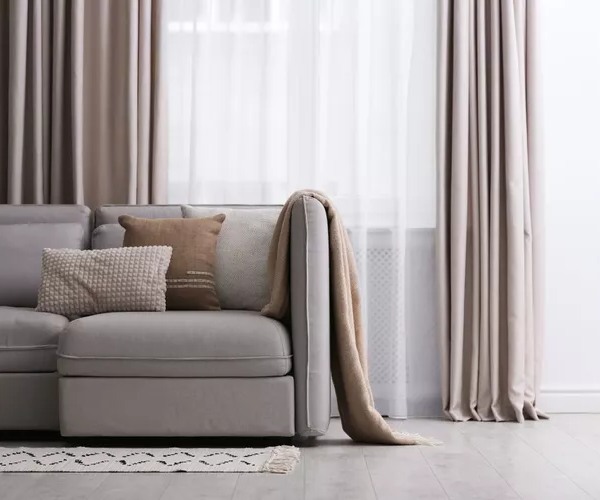
5. Add Lighter Furniture
One best ways to brighten a dark room is to choose your furniture materials carefully and choose lighter colors if possible. “Select furniture with light upholstery or natural wood finishes to maintain an airy feel,” says Nina Lichtenstein, founder and principal home designer of Custom Home Design by Nina Lichtenstein. “Avoid bulky or dark-colored pieces that may visually weigh down the space.”
Also, Read Affordable Design Ideas for Small Bathroom
6. Add Dimmers
Another step to boost the lighting in the room is to add dimmers. If you’re installing overhead lighting, be sure to opt for dimmer switches as they allow you to have a much better control of the light level. “Light is directly related to mood, especially during the winter months—but bright light 24/7 is not going to improve anyone’s attitude,” says Kelly. “Dimming the light softens the environment, and that creates a real sense of coziness and warmth.”
7. Add Decorative Mirrors
Mirrors are great bouncers of layered light. From lamps, overhead lighting, candles, and more, they instantly brighten a dark room. “Utilize mirrors strategically to brighten darker areas,” says Lichtenstein. “Place mirrors to reflect natural light throughout the room, adding depth and luminosity.” This trick appears as though you have double the amount of light in your space.
8. Consider Reflective Surfaces
Besides mirrors, there are other lots of ways that act as reflective surfaces like glass, acrylic, and glossy finishes, says Lichtenstein. “Consider utilizing a glass coffee table, acrylic chairs, or glossy cabinets to further elevate the overall brightness and aesthetic appeal of the room,” she says.
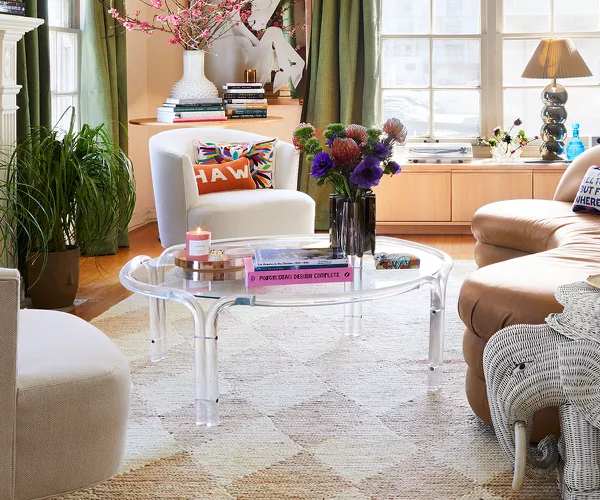
9. Add an Area Rug
If your flooring is of wood, then try adding a bright area rug that will make a big difference in the tone of the space. “Sometimes wood floors actually darken rooms, so adding a rug in lighter color tones can really soften and brighten a room,” says Erin Bergant Harrod, owner and principal designer of Heartfelt Homespace. “It also can add a cozy factor and help make the room feel more defined and cohesive.”
10. Add Light Colored Pillows and Throws
Do not underestimate the importance of your accents which are just as important as some of the main factors of your room. Like paint and furniture colors, these small things equally make a big difference. “Sometimes just adding some new light-colored pillows and throw blankets are enough to brighten a dark sofa or chair,” says Harrod. “Be sure to consider the material as well. Linens and cottons are great for adding to the ‘feel’ of being light and bright.”
11. Let Go of Anything Casting Shadows
Check if there is anything that is blocking the light in your room. It can be anything from ornaments on your windstill, large statement items that are a tad too obtrusive, or a TV that is positioned in the wrong space. The more items that cast shadows, the more awful it makes your interior feel. So, rearranging the layout is important to brighten a dark room.
If there are big pieces like pieces of furniture, see if there is any better position within the room. A media unit is great for a large TV as it gives a dedicated space where it will be attached on the way.
Also, with the extra storage they give, you can move any extra items away from your windows into a more prominent area.
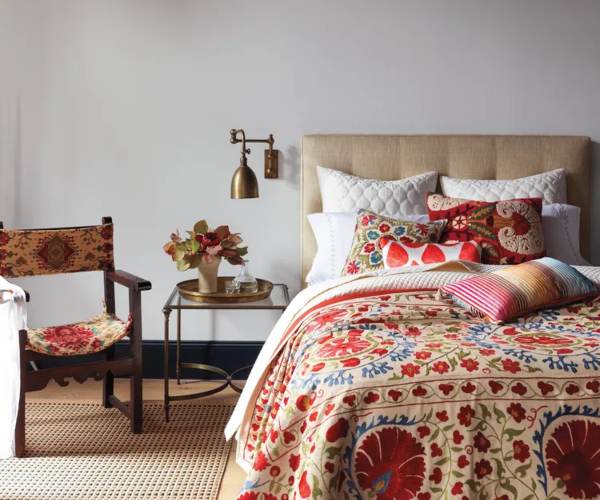
Simple Home Updates That Will Help You Feel Calm
Indeed, furniture, colors, and details in your home can actually boost your mental health. Learn these expert tips to make your home a sanctuary.
A home is a refuge where we can step away from the noise of the world be truly ourselves and make lasting memories with our family. Taking care of your home will nourish your mind and body and will give you endless opportunities to recharge.
“Our homes should be our sanctuaries,” says Joshua Smith, whose specialty is the intersection of wellness and home design. “There’s power in reframing our focus to how we want our homes to feel rather than how we want them to look. With this at the forefront, we are best equipped to create spaces that positively impact our mental health.”
Bring More Plants Into Your Home
It is not unknown that there is a strong link between our emotional state and the amount of time we engage with nature. Some research has shown that there is even an increase in cognition. While you can not replace the feeling of a hike or picnic in the sunshine, there are many ways you can add nature to your space.
Adding plants is a simple yet effective way to bring outdoors inside and multiple studies suggest that this simple thing can reduce stress and promote comfortable feeling. “We like to incorporate one tall plant or tree to anchor the space when we design a room,” says Laura Britt, an interior designer and expert at Well Build and Design. “Work in odd numbers of three when grouping; one tall plant with two smaller plants brings a beautiful green punch of color into your home. Use varying shapes, leaves, and shades of green.”
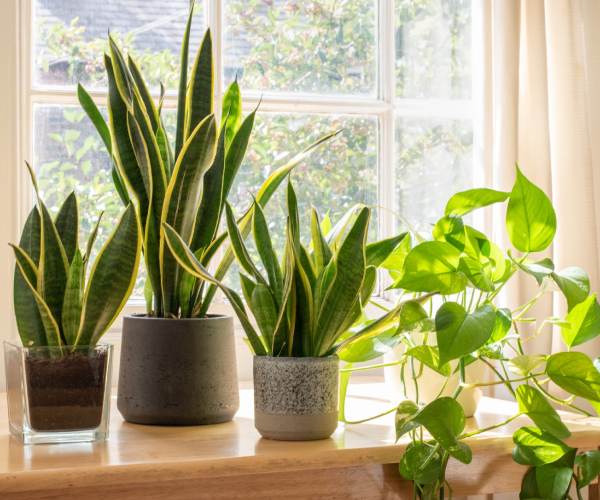
Some of the stress-busting plants are olive trees, fiddle leaf figs, parlor palms, succulents, and even fresh floral arrangements.
Create Your Own Meditation Space
If you have enough space, give a small space in your home for meditation. This can be done easily with just a chair kept in a corner or even a room fully dedicated to daily reflection if possible. The whole point is to have a place where you can visit routinely to reap the rewards of this calming practice.
“It’s no secret that meditation and mindfulness are correlated with positive mental health improvement. Studies repeatedly show that meditation can effectively reduce stress, cortisol levels, and negative emotions like anger and fear,” says Smith. “Illuminate your other senses with soft textures and a proper meditation seat that provides comfort and supports your posture.” Bring in items that soothe you like light background music, a journal, and art.
FAQs
Q: What lights help a dark room?
A: Room-brightening hanging light fixtures, such as pendant lights and chandeliers, are both practical and decorative. Track lighting, recessed lighting, and directional spotlighting work well on their own. They also do well when paired with lamps and other light fixtures.
Q: What color makes a dark room brighter?
A: The aim is to make the room appear larger and lighter, so avoid any dark color on the ceiling. White is always a safe choice, but you could also go for pale tones of other paint colors, from greens to gold.
